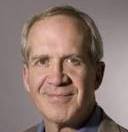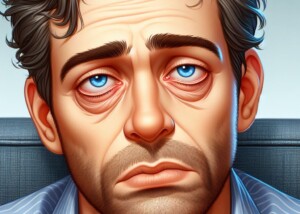
How can a change of just one hour disrupt the sleep of so many people and cause anxiety?
It’s just ONE HOUR, yet throngs of people are thrown into a tizzy over such a seemingly simple change to make!
What’s really going on here?
For this article I asked this question to Richard Shane, PhD, behavior sleep therapist and Founder, Sleep Easily.
I was inspired to write this post because, once again, msn.com’s main news page has run an article about how to make the transition and adjustment to Daylight Savings Time.
And once again, I cannot wrap my head around how anyone could require an adjustment and struggle with the transition.
All my life I’ve gone to bed at varying times. So how could setting the clock ahead one hour make a difference?
This would be what I call an invisible integration into my bedtime range – and certainly, for the bedtime range of many other people.
So if your bedtime is normally between 11 pm and 12:30 am, and you usually get up at around 6:30 am, how could Daylight Savings Time – that “spring forward” – cause any problems?
Media Hype Takes Some Responsibility
Dr. Shane explains, “The fall clock change in which we move the clock back means that in the new clock time, you are going to bed one hour later than before the clock change.
“Going to bed one hour later is easier for people because people often go to bed one hour later [due to unexpected events such as visiting relatives, coming home late from a social event, sick family member, etc.].”
However, “The spring change requires us to go to bed one hour earlier than before the clock change,” says Dr. Shane. “For some people, going to bed an hour earlier is not as easy because they don’t feel tired yet.”
Interestingly, many people who go to bed at a pretty-set time every night will find that on occasion, they just don’t feel tired.
For example, you may normally go to bed between 11 pm and 11:15 pm every night or at least Monday through Friday, but periodically, you’re just lying there unable to fall asleep.
Eventually you do, perhaps at 1 am, and your alarm goes off at its usual time of, say, 6:45 am, and you get up and get on with your morning as though nothing unusual has happened.
Yet when people anticipate the anxiety of not being able to fall asleep with the Daylight Savings Time of springing forward, this is quite a confounding phenomenon – especially when a person’s bedtime consists of a sleep range greater than one hour.
“Some of the disruption is physiological because the hour change is affecting your body’s sleep cycle,” says Dr. Shane.
“However, some of the anxiety comes from people’s thoughts that the change is going to be difficult, stoked by the media articles and stories about this change being difficult.”
The power of suggestion? It’s amazing what media hype can do.
Dr. Shane adds, “Epictetus, a Greek philosopher in the first and second centuries, said, ‘It’s not what happens to you, but how you react to it that matters.’
“We’ve all experienced that to be true about so much in life. It is true of your thoughts and reactions to the coming time change. When people get very upset in anticipation of the change, I call that throwing gasoline on the fire.
“Yet as I stated above, some of the disruption is physiological and some people don’t feel sleepy when it is time to go to bed.
“There are some simple tips that can help nudge your body and mind into feeling sleepy.”
 Lorra Garrick has been covering medical, fitness and cybersecurity topics for many years, having written thousands of articles for print magazines and websites, including as a ghostwriter. She’s also a former ACE-certified personal trainer.
Lorra Garrick has been covering medical, fitness and cybersecurity topics for many years, having written thousands of articles for print magazines and websites, including as a ghostwriter. She’s also a former ACE-certified personal trainer.
 Dr. Richard Shane, founder of sleepeasily.com
Dr. Richard Shane, founder of sleepeasily.com
.









































